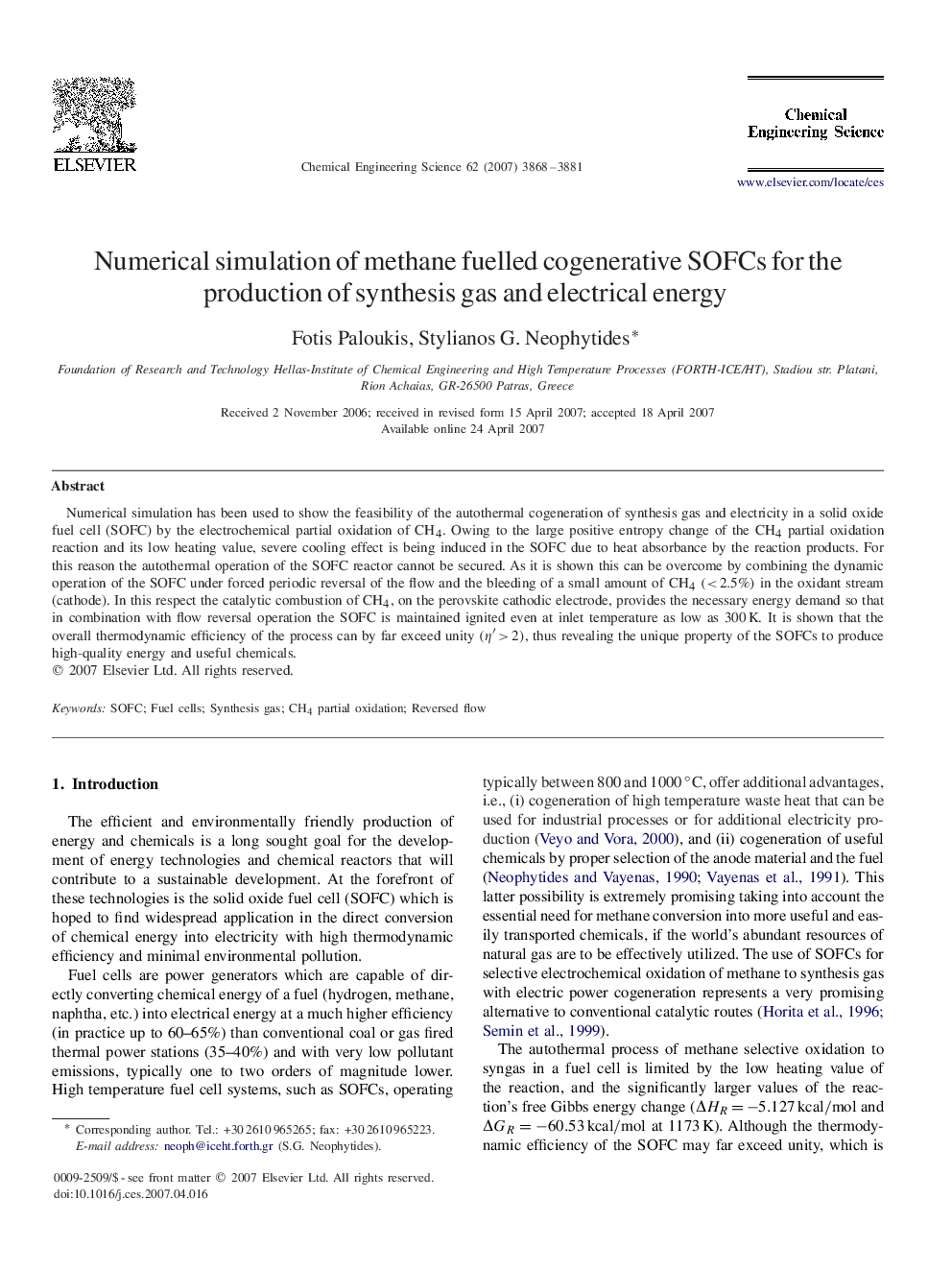| Article ID | Journal | Published Year | Pages | File Type |
|---|---|---|---|---|
| 158118 | Chemical Engineering Science | 2007 | 14 Pages |
Numerical simulation has been used to show the feasibility of the autothermal cogeneration of synthesis gas and electricity in a solid oxide fuel cell (SOFC) by the electrochemical partial oxidation of CH4CH4. Owing to the large positive entropy change of the CH4CH4 partial oxidation reaction and its low heating value, severe cooling effect is being induced in the SOFC due to heat absorbance by the reaction products. For this reason the autothermal operation of the SOFC reactor cannot be secured. As it is shown this can be overcome by combining the dynamic operation of the SOFC under forced periodic reversal of the flow and the bleeding of a small amount of CH4CH4(<2.5%)(<2.5%) in the oxidant stream (cathode). In this respect the catalytic combustion of CH4CH4, on the perovskite cathodic electrode, provides the necessary energy demand so that in combination with flow reversal operation the SOFC is maintained ignited even at inlet temperature as low as 300 K. It is shown that the overall thermodynamic efficiency of the process can by far exceed unity (η′>2)(η′>2), thus revealing the unique property of the SOFCs to produce high-quality energy and useful chemicals.
